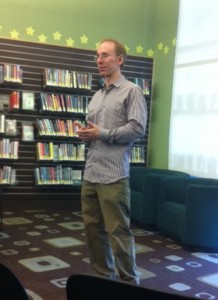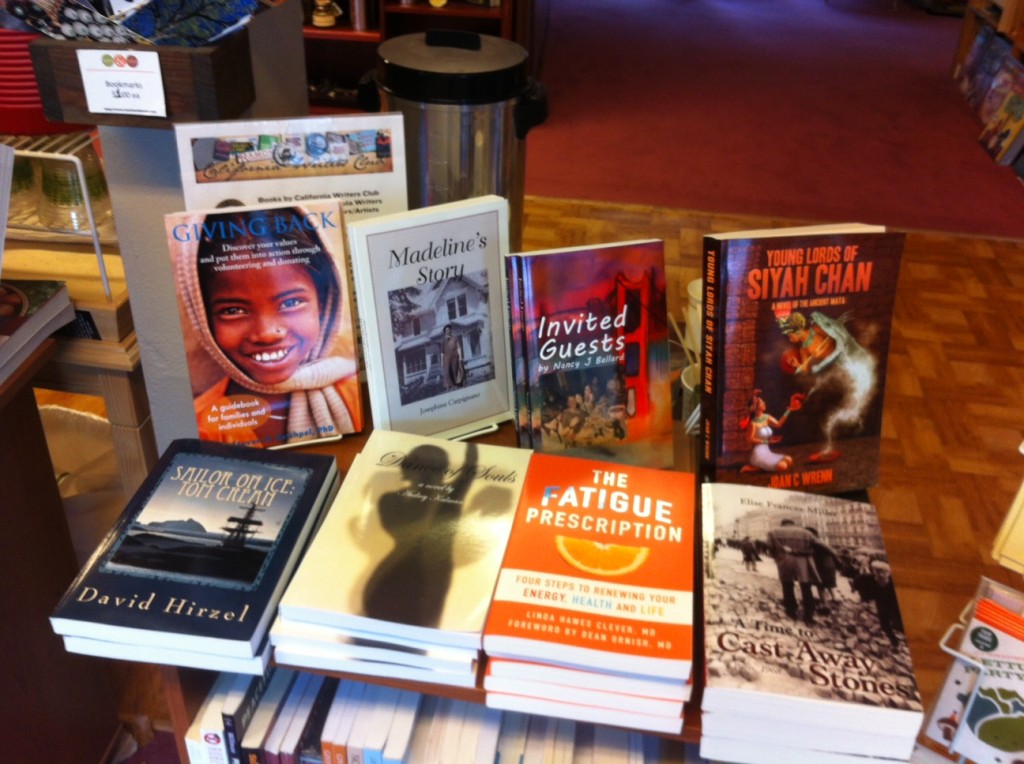Overview
Stanford PACS Center (Center for Philanthropy and Civil Society) has had some really good speakers and panels this quarter. Last night’s was a strong finish to the year, with a discussion on social entrepreneurship. In the spirit of sharing the knowledge, here are my notes, a rough transcript of the event. Time permitting (it never seems to…) I’ll clean it up a little bit more, but if abbreviations don’t make sense, or you were there and I got it wrong, please leave a comment.
Speakers
Jeffrey Solomon, Author of “Art of Doing Good: Where Passion meets Action“ Roadmap for social entrepreneurship, profiling 18 of today’s top social entrepreneurs. President of Bronfman Foundation. Author of 80 articles, co-author of Art of Giving. Council of Foundations.
Jenny Shilling Stein: 2002 co-founder of Draper Richards Kaplan (DRK) Foundation. Director of Business Development at RealNames (managing Microsoft account) . Boards of Food Corps and Global Health Corps. Startup funding, management assistance, and network of entrepreneurs. DRK grants $300K over 3 years to social entrepreneurs.
Alexa Culwell (moderator) is the Founder of Philanthropy Futures for creating impact for good of world. Former CEO of Charles & Helen Schwab Foundation and Stupski Foundation.
Rough Transcript
Alexa started off with some favorite quotes from Art of Doing Good:
Social entrepreneurs are “Inspired to do good on grand scale.”
“The for profit entrepreneur stops at the border of her soul. Not so the social entrepreneur, she crashes through.”
Jeffrey Solomon: The Bronfman Foundation is a spend down foundation, set to close in 2016. Use experience to build a body of knowledge. See this as a growing trend, and can help with sharing their lessons through website Spenddown.org. Plan to use their final four years to create intellectual property. Leverage is a great opportunity for foundations. Try to measure each year. First book, Art of Giving where your soul meets a business plan. Criticism: Book for those who can afford to give $50-100K+/year . Incubated 9 organizations that will continue after close of foundation. Joy of meeting incredible people and seeing and supporting their vision. Take principles of Art of Giving, and created very accessible (not academic treatise) for social entrepreneurs. Looked at 200 from CNN Heroes, NBC stories of week, plus Bronfman foundation, took 18 of best (management and governance lessons) that would be subject.
Jenny Shilling Stein: DRK foundation selecting and funding social entrepreneurs over 11 years (45 people so far). Understands how they approach the work. “This is their life’s work. It’s their passion. It isn’t a job.” The ideas, the good ones that go somewhere are a chain reaction leading to more good in the world, and magnetic to bring more people to them, people feel honored to work for the person and the model. Can’t imagine themselves working anywhere else.
Alexa Culwell: Peer supported mentorship: What is the role for social entrepreneur? How have you incorporated it?
Jeffrey Solomon: Overlap in book and DRK Foundation (7 out of 18 or 45). Talk about what they’ve learned from the network and how powerful it is for them. So supportive of one another. Reflects DRK strategy and the loneliness of social entrepreneurs. Need to have peers support.
Jenny Shilling Stein: Evolved to be important part of strategy over the years. Office space not needed: growing too fast and can’t agree on what’s needed. First class included: John Wood (Room to Read), Janie Leu (Upwardly Global). Once they had twelve fellows in a room together, tipping point, they became more powerful force than we were, monitor themselves outside of conference (3 day private conference). Drive, ambition, impatience, risk-taking, even if not background and experience. Wide range of leader types, and this is cream of crop. Really driven, no-nonsense. Create environment? Not a touchy-feely group, but founders create a family. Social entrepreneurs feel incredibly inspired sense of belonging that Bill Draper is famous for.
Jeffrey Solomon: Ability to take “No” as first step to “yes”. Resilience is amazing. Ability to be infectious about what they do. Sense of energy that really attracts donors, potential board members. People want to be with these people. Most successful is ability to be self-reflective. E.g. Harlem Children’s Zone. Looked at evaluative results of his work and said “I’m failing”. We have to re-engineer everything we’re doing. Unusual, esp. when so successful in raising money.
Sense of belonging?
Jenny Shilling Stein: John Wood of Room to Read one our first. Andrew Yoon of One Acre Fund went to John Wood for mentorship. John joined Andrew’s BoD.
Fundraising?
Jeffrey Solomon: can’t delegate chief development officer task. Nonprofit economy makes no sense. Economy : I give you money, and you give me goods or services. In the non profit economy, I give you money and you give someone else goods and services. Makes no sense. What do I get out of it? Increasingly an expectation of ROI. Usually CEO Best Social Entrepreneurs think they’re not fundraisers, but become so infected by own energy that they will break through any barrier. Resources is the biggest barrier. SE is out there doing it all even if they said they’re not a fund raiser. Any CEO who plans to delegate is not someone I’d recommend.
Jenny Shilling Stein: Fundraising, Strategic Planning, Management, Governance, each topics that get covered in their 3 year cycle. Kaye Sprinkel Grace As more and more young people are interested in doing good in the world,. Fund raising at Kiva is democratized.
Alexa Culwell: Even if SE think they have business model, they still have to raise money. Will need capital for innovation. If you’re not up for that, you have no business doing the work.
Jenny Shilling Stein: Misconception in funding in for-profit segment is so easy. Have to be fabulous sales person, constantly going after more money. Giving away pieces of your company. Salesman needs to be subtitle of CEO of any venture.
Jeffrey Solomon: So much emphasis on earned revenue today, one almost has a sense of guilt that might be great disruptive tech that significantly improves social venture may be run, but without stream of revenue earned, people will say “No, I don’t think so.”. Need sense of responsibility to the sector.
Other common mistakes?
Jeffrey Solomon: Friends and family are important for (early) funding and governance. Too often entrepreneur stays with F&F too long, rather than finding true partner or someone who will keep him honest.
Jenny Shilling Stein: Transition from early stage: Common mistakes: Board model that you jerry-rigged?
Give money, but a staff person joins the board. Best practices. If goal is to bring innovative model to sale to serve wide # of beneficiaries and affect industry and how they do their work beyond you, then there is set of best practices. Kitchen table friends are not risk takers. A fresh board is great, often F&F, this is what we need the board to look like, sketching it out, where do you fit in? Biggest mistake is not focusing on it. No shame in that, since you have no time. Constantly asking about the board. Do you have a chair in mind?
Kiva board was great, but no-one had taught them how to act in board member. Bring your business skills, knowledge and intuition, and when you hear something that doesn’t sound right, call it out. Both arrogance and saying less than they should are. Critical friends. Not getting into minutia. As you build staff, get that (budget) out of the board, move it to the staff.
Jeffrey Solomon: Another mistake made by funders (i. “NIFO” Noses in, fingers out. Conspiracy between funders and Social Entrepreneur suck them into becoming operational partners, gives social entrepreneur an out of saying “My funder made me do it.” Gets funder involved in things that they have no experience in doing.
Jenny Shilling Stein: Trying to do too much in the model. Hard enough to do one thing well. Encourage people to be very simple, get good at one thing. Iterate, experience in real world, add thing as you need.
Alexa Culwell: “Never ask for advice you’re not willing to consider”. Sees many cases where people who have asked her for advice never do anything with it. She was won over by one CEO who, initially resistant to what she had to say, later started sending her monthly updates of what he was doing toward her recommendations.
Jenny Shilling Stein: Hiring correctly, not just resume, but cultural fit. Working style, risk tolerance. Small staffs. First fund raising hiring never works out, because you should be doing the fundraising.
Alexa Culwell: What makes a good BoD meeting that really engage and draw people excited:
A: Center for Effective Philanthropy board meetings had great people, didn’t repeat what was sent in advance (assumed the directors had read it). Asked for advice, Fun, intellectual engaging, and captured the advice well.
Jenny Shilling Stein: Balance between reporting out to the group to share great things you’ve done, nitty gritty of “let’s review audit/budget”. Balanced with generative thinking “Top 3 things keeping you up at night”. Don’t have a clear answer, not a voting issue, been going on for a few months. Have the expert speak last. Or get everyone’s quick thoughts, have them write them first. Separate meeting parts
Jeffrey Solomon: Board member responsible for board development (governance structure) or building it into each meeting as well. Most important decision is budget review. 99% of make it rubber stamp. Need to take a step back. Nothing mechanical about passing a budget. It’s a statement of policy. If BoD doesn’t treat it that way, there’s something missing. Very helpful to have job descriptions for board members. A clear contract so everyone knows what’s expected within context wealth, wisdom, wit,.
Scott Silverman’s BoD terminated him. He knew the confrontation was coming, but wasn’t able to settle it.
Alexa Culwell: Founders? At what point do founders become professional long-term executive or turn it over? What models do you see in portfolio?
Jenny Shilling Stein: Mostly staying on and becoming managers. Need a #2 who is really running operations (since founders are out raising money). Hard transition. At each stage when things change, “Do you want this new job?” Are you fully into it. Clinging to what you were doing in years 1&2 won’t work. Find people really dynamic, also have managerial skills. Keep half entrepreneur, half manger for 5-10 years. Hard.
Alexa Culwell: Self-reflective. Able to think of limitations, and whether they can re-up and re-commit. A16z blog on betting on founders. Premise to bet on and develop founders into long-term leaders. Passion trumps anything else.
Jenny Shilling Stein: Good startup funders deeply believe in and love entrepreneurs. Founders aren’t easy people, deeply understand where they’re coming form their genius. If you don’t, you’ll make big mistakes.
Jeffrey Solomon: Deep personal connection to issue they’ve been working on. Spiritual calling that you can’t replicate, hire for or replace. Work of DRK that provides support, skills, network is so important. Can’t say great idea, we’re going to replace you with
Q&A from Audience:
Shelly from Stanford Hillel Board Chair: Can social entrepreneurship principles be brought to existing organizations?
Jeffrey Solomon: Yes, though extraordinarily difficult. “Nothing more doubtful than creating sense of change. Only have support of those who can envision the future and resistance of everyone who is worried what change will mean to them.” Approx quote from Machiavelli. Have to reinvent themselves. What worked in the past won’t work in the future. Prerequisites: a board that understand real need for change, and executive staff that can be partner for that change. Disruptive tech example: “Birthright Israel” by changing all rules: Market to only young adult, rather than parent & child, reduced from 6 weeks to 10 days, made it a gift not a paid trip. Willingness for 2 major funders to support, and now a model with 11 countries having similar programs.
Longer organization has been around, the more risk-averse it becomes. Do you have people willing to push through? Requires all the courage in the room.
Ariel Mendez PACS PhD student: Generating sense of belonging among fellows or board: Is there a competitive dynamic among the group? Helps to have founders in the room? How do you overcome it, and create willingness to share competitive advantage?
Jenny Shilling Stein: DRK doesn’t pick a specific issue to fund. So less competition, not going after same funders. Can share contacts. Proactively share funders that are funding them. Great respect for one another. Other org is doing high, high quality work, using dollars effectively. One gift you can give a funder is to send them great grantee.
Marina Oser: PhD in biosciences: Funding from foundations vs. individuals Is there conflict where funder wants very specific things, and then funding is pulled?
Jenny Shilling Stein: Both foundations and people can do that to you.
Alexa Culwell: “Foundations are people, with all same idiosyncrasies and complications”
Put it in writing, don’t put all your eggs in one basket. Don’t take too much money up front, shift model. Develop a strong board. (So you and board can go back to funder and say “This is not OK.”)
Jeffrey Solomon: SSIR least reliable funders were foundations. Too many want 3 years and out. (not true of VC firms). Forces you to play games to create “new projects” that are really your core service. 2) Of the 65K foundations over 50K are checkbooks: no staff, no guidelines. $300B in private philanthropy, 85-90% of philanthropy is from individuals (when you include bequests and foundations which are really individuals). Really hard to generalize across foundations. Create one page of what you’re funding and get people to buy into that one page. Might be amended, but one-page. Very clear term sheet with every And spirit of re-visiting and revising the one-page if needed.
Kim Meredith (director of PACS): 10 models of nonprofit funding available off SSIR home page (by Bridgespan)
Juluis Parras: Echoing Green Fellow: Filipino and philanthropy: Tonight’s discussion has been VC-based. How about folks rooted in social justice perspective who want to expand work but view capital/business with distrust?
Jeffrey Solomon: Great complicated question. ”Bad money for good purpose is good money” Environmental movement “greenwashing” is a terrible thing. What makes it terrible is being honored for what they are doing to support the environment while they are destroying it. Separate the financial support for doing social justice projects with those honoring it. Less loaded.
Jenny Shilling Stein: People who are funding are more in the middle.
Alexa Culwell: Public education reform work. Philanthropists are interested in helping education system. What motivates them are deep social justice and racial justice . Frame they’re coming from is more simplistic. Get into it and find they’re funding some activist work. Frame doesn’t resonate but common goal of achieve student success. Agree what we’re trying to do, be open about how we get there. Trying to figure out what everyone ‘s common objective is. If not common objective. Probably be in different rooms working on different projects.
Impact Investing and mission drift?
Make sure early funders are on board with social mission. B Corp can help, but isn’t protected. If your product is inherently good in market, then growth is good. If the product can be restricted to helping only the rich, then you risk losing social purpose
Alexa Culwell: Start as for-profit and convert to non-profit, as did the Opportunity Fund, foremost CA microcredit lender.
How can social entrepreneurs rise above the noise?
Jeffrey Solomon: 1) “Just do it” you can spend too much time thinking about it, kill your own passion when passion is the most important asset you have. 2) concentrate on leverage in everything you do. Whether it is introducing funders to one another or bringing on to your board people who have expertise you don’t. More you can work at multiple levels that
Jenny Shilling Stein: Know thyself. Understand your capacity to follow your passion. Be very honest if you are ready to make this leap. But there is a time and place for it.
Alexa Culwell: Simplify your complex aspirations. Systems thinking. Surround yourself with people who have half a chance who can replace you one day.






